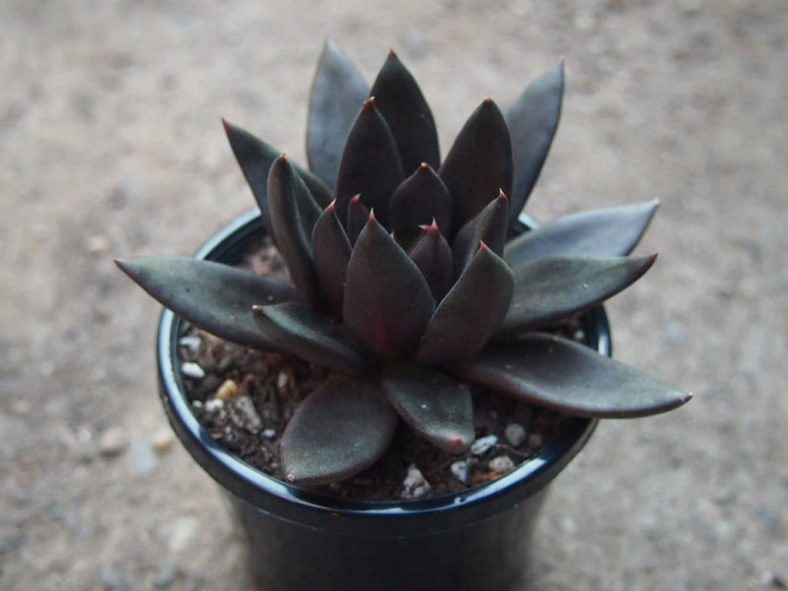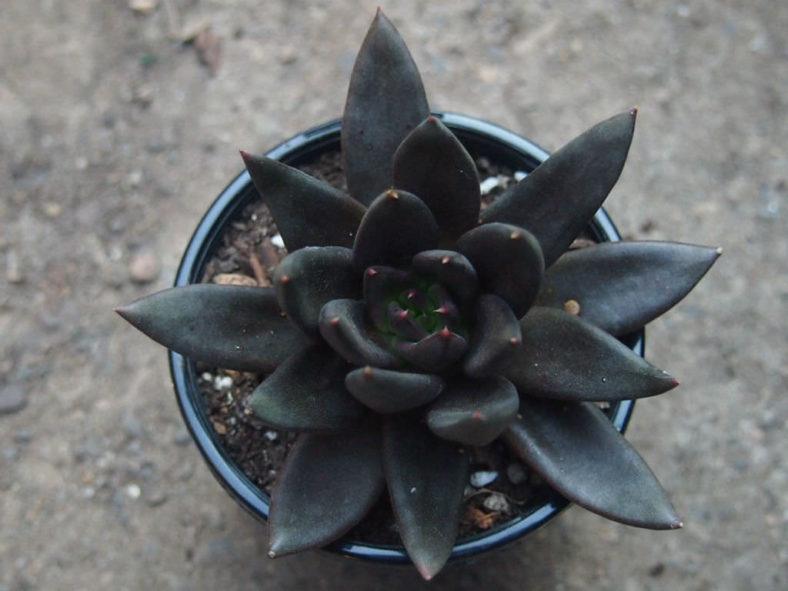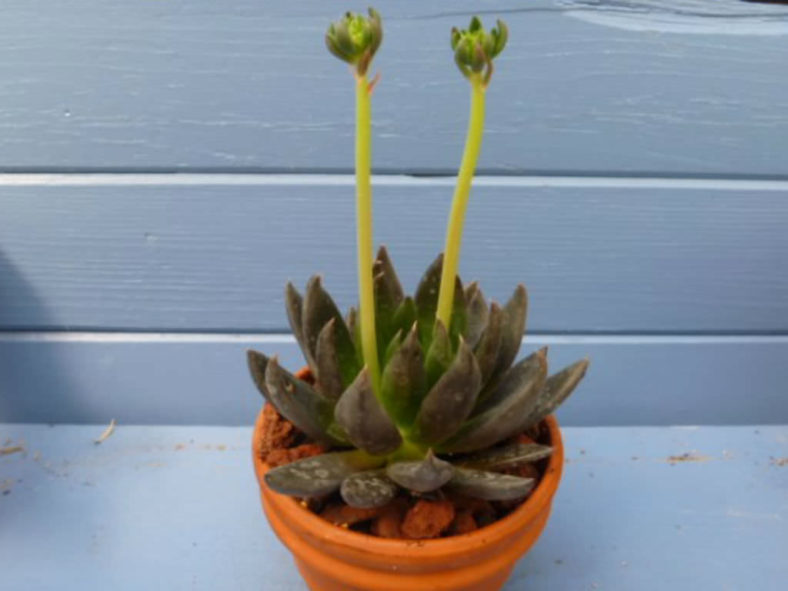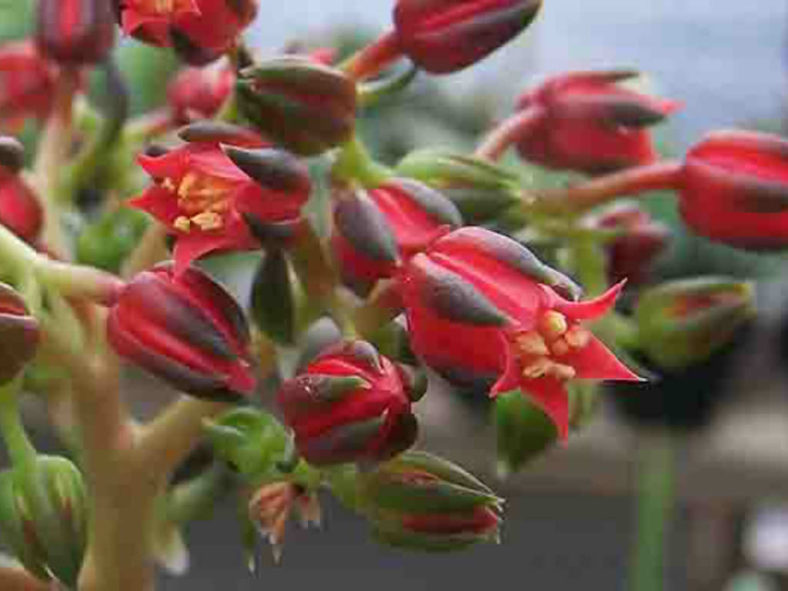Scientific Name
Echeveria 'Black Knight'
Accepted Scientific Name
Echeveria affinis E. Walther
Synonym(s)
Echeveria affinis 'Black Knight'
Scientific Classification
Family: Crassulaceae
Subfamily: Sempervivoideae
Tribe: Sedeae
Genus: Echeveria
Origin
R. J. Taylor collected this succulent under bushes and trees on the road between Mazatlan and Durango in Mexico.
Description
Echeveria 'Black Knight' is not a hybrid but an especially dark form of the variable Echeveria affinis. It forms rosettes of blacker, slightly differently shaped leaves.
During summer, the rosettes produce clusters of attractive urn- to bell-shaped flowers with scarlet corolla and olive-green sepals. The flowers appear on stalks that can grow up to 6 inches (15 cm) tall.

Hardiness
USDA hardiness zones 9a to 11b: from 20 °F (−6.7 °C) to 50 °F (+10 °C).
How to Grow and Care
Most common Echeveria species are not complicated succulents to grow, provided you follow a few basic rules. First, never let water sit in the rosette, as it can cause rot or fungal diseases that can kill the plant. Additionally, remove dead leaves from the bottom of the plant as it grows. These dead leaves provide a haven for pests, and Echeverias are susceptible to mealy bugs. Finally, as with all succulents, careful watering habits and plenty of light will help ensure success.
Repot as needed, preferably during the warm season. To repot a succulent, ensure the soil is dry before repotting, then gently remove the pot. Knock away the old soil from the roots, removing any rotted or dead roots. Treat any cuts with a fungicide.
Most Echeverias can be easily propagated from leaf cuttings, although a few are better from seeds or stem cuttings. To propagate a leaf cutting, place the individual leaf in potting soil for succulents and cover the dish until the new plant sprouts.
Learn more at How to Grow and Care for Echeveria.
Links
- Back to genus Echeveria
- Succupedia: Browse succulents by Scientific Name, Common Name, Genus, Family, USDA Hardiness Zone, Origin, or cacti by Genus
Photo Gallery


